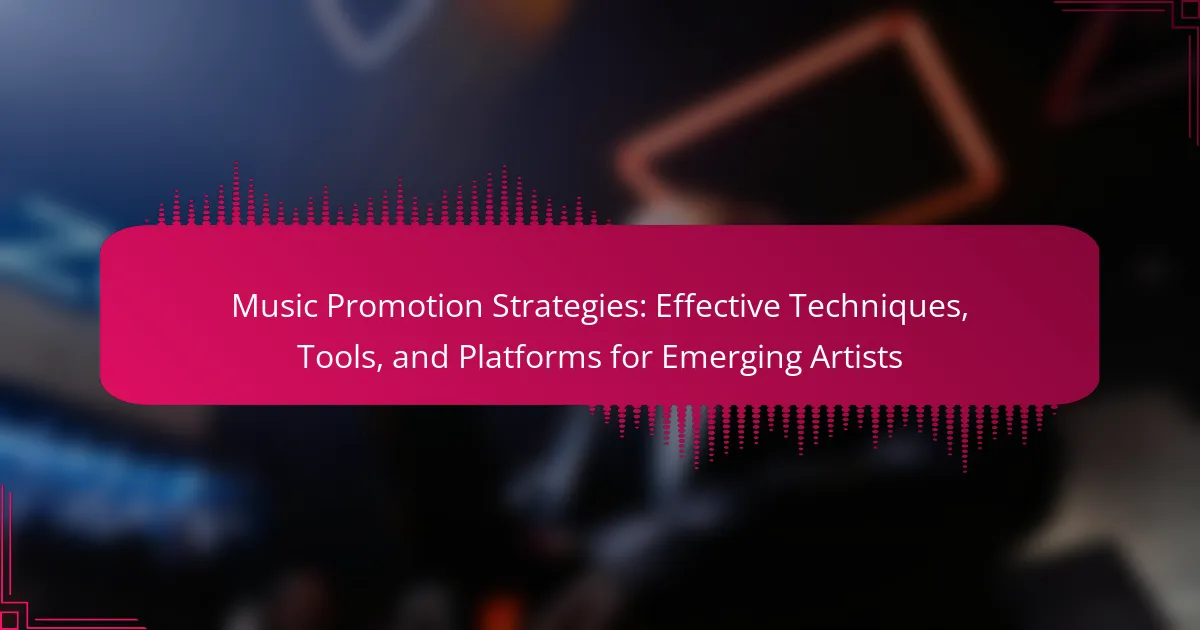Digital music distribution services enable artists to reach global audiences while managing rights and royalties. This article explores the costs associated with these services, the advantages they offer, and unique features that can enhance an artist’s success. It also addresses common challenges artists face and provides strategies for maximizing their impact in the digital landscape. Understanding these aspects is crucial for artists looking to effectively distribute their music and engage with fans.
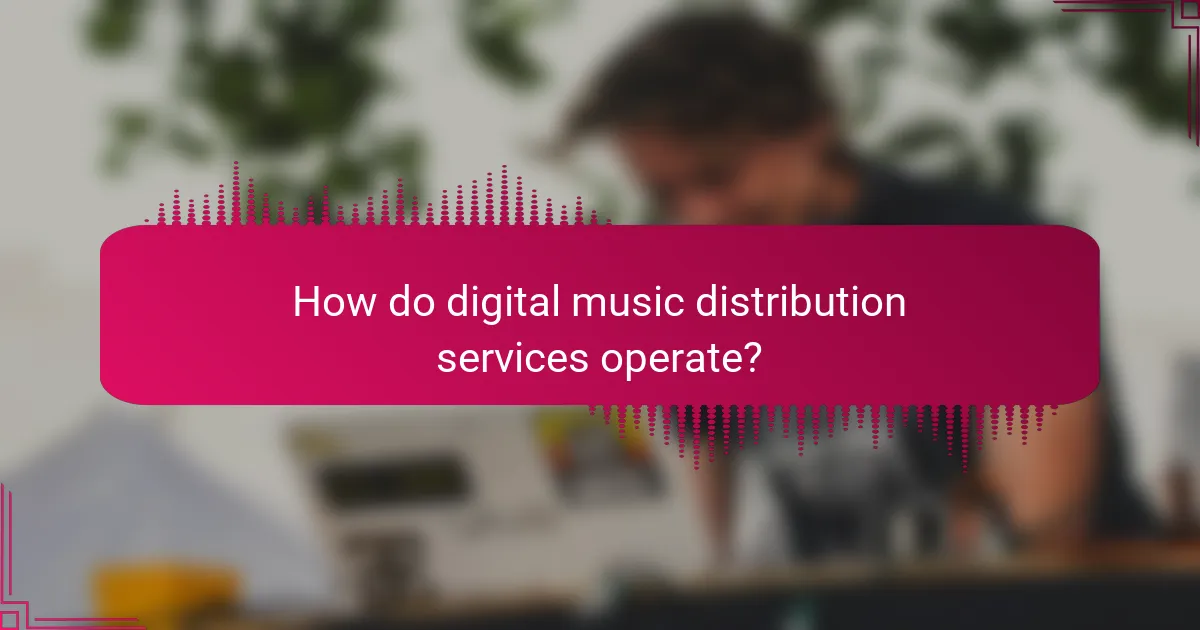
How do digital music distribution services operate?
Digital music distribution services operate by delivering artists’ music to various platforms while managing rights and royalties. They provide a streamlined process for uploading tracks, ensuring they reach streaming services, digital stores, and social media. Typically, these services charge a fee or take a percentage of sales, making them accessible for independent artists. The advantages include increased exposure, simplified distribution, and the ability to track performance analytics.
What are the key features of digital music distribution platforms?
Digital music distribution platforms offer essential features that enhance artist visibility and revenue. Key features include royalty tracking, global reach, user-friendly interfaces, and multiple distribution channels. These platforms typically provide analytics tools to help artists understand their audience and optimize their marketing strategies. Additionally, many services offer various pricing models, allowing artists to choose options that suit their budget and needs.
Which major digital music distribution services are available?
Major digital music distribution services include DistroKid, TuneCore, CD Baby, and Amuse. These platforms help artists distribute their music across various streaming services and online stores.
DistroKid offers unlimited uploads for a flat annual fee, while TuneCore charges per release. CD Baby provides both digital and physical distribution options, and Amuse operates on a freemium model. Each service has unique advantages, such as faster release times or better revenue splits, catering to different artist needs.
How do artists select the right distribution service?
Artists select the right distribution service by evaluating factors such as cost, reach, and additional services offered. They should consider the distribution platform’s fees, which can vary widely, and its ability to deliver music to preferred streaming services. An effective service should also provide marketing tools and analytics to help artists track their performance. Unique attributes like user-friendly interfaces and customer support can further influence the decision.
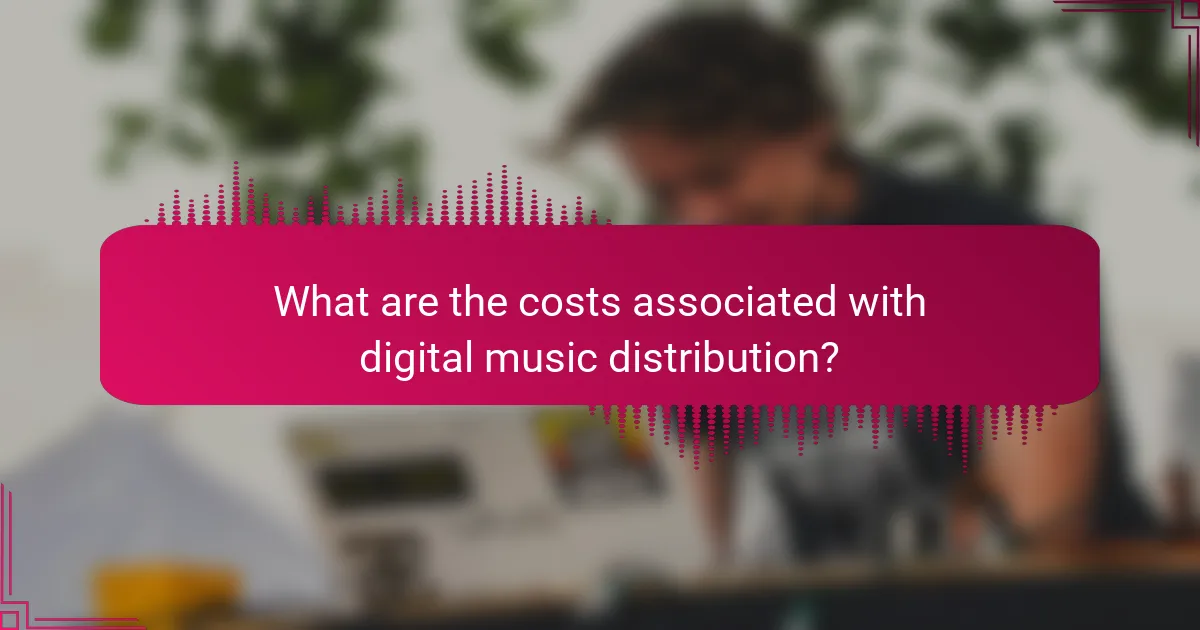
What are the costs associated with digital music distribution?
Digital music distribution costs vary based on the service provider and features. Common costs include setup fees, distribution fees, and percentage cuts from sales.
For example, some platforms charge a flat fee ranging from $10 to $50 annually, while others take 15% to 30% of revenue. Unique attributes include additional services like marketing support or analytics, which may incur extra costs. Artists should evaluate these expenses against potential benefits to determine the best fit for their needs.
How do pricing models vary among different services?
Pricing models for digital music distribution services vary significantly, influencing artists’ costs and revenue potential. Common models include flat fees, percentage cuts from sales, and tiered pricing based on services offered.
Flat fee models charge a set amount for distribution, providing predictability in costs. Percentage-based models take a portion of sales, aligning the service’s success with the artist’s earnings. Tiered pricing offers different levels of service, allowing artists to choose based on their needs and budget.
For example, some services may charge an annual fee of $20 for basic distribution, while others may take 15% of sales, impacting overall artist revenue. Understanding these models helps artists select the best service for their financial goals.
What additional fees should artists be aware of?
Artists should be aware of additional fees such as distribution fees, performance royalties, and marketing costs. Distribution services often charge a percentage from sales or a flat fee for each release. Performance royalties may be deducted for plays on streaming platforms. Marketing costs can vary significantly based on promotional strategies. Understanding these fees helps artists manage their finances more effectively.
How can artists evaluate the cost-effectiveness of distribution services?
Artists can evaluate the cost-effectiveness of distribution services by analyzing fees, revenue share, and additional features. Key factors include upfront costs, percentage taken from sales, and services like marketing support or analytics. Compare these attributes across multiple platforms to find the best fit. For example, some services may charge a flat fee while others take a percentage of earnings. This comparison helps artists maximize their profits and choose a service that aligns with their goals.
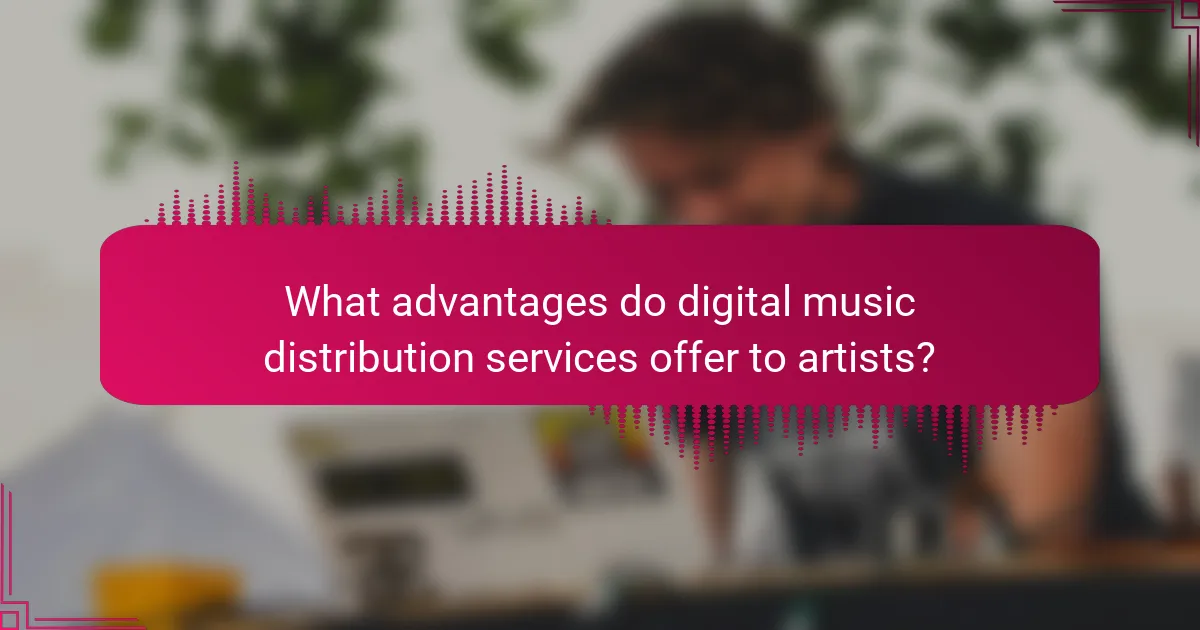
What advantages do digital music distribution services offer to artists?
Digital music distribution services provide artists with broad reach, revenue opportunities, and control over their music. These services enable global availability on streaming platforms, allowing artists to connect with diverse audiences. They often offer analytics tools, helping artists understand listener behavior and optimize marketing strategies. Additionally, many services simplify royalty collection, ensuring artists receive fair compensation for their work.
How do these services enhance an artist’s reach and visibility?
Digital music distribution services significantly enhance an artist’s reach and visibility by providing access to multiple streaming platforms. These services facilitate global distribution, allowing artists to connect with diverse audiences. They also offer promotional tools, analytics, and support that increase engagement and fan interaction. As a result, artists experience improved discoverability and potential revenue growth.
What role does data analytics play in digital music distribution?
Data analytics enhances digital music distribution by providing insights into listener behavior and market trends. It allows artists to optimize marketing strategies and tailor their music to audience preferences. Analytics also helps in tracking revenue streams and identifying successful distribution channels. By leveraging data, artists can make informed decisions that boost their reach and profitability.
How do distribution services support revenue generation for artists?
Digital music distribution services significantly enhance revenue generation for artists by providing access to various streaming platforms and digital stores. These services facilitate wider audience reach and ensure more effective monetization of music through royalties and sales.
Artists benefit from cost-effective distribution, often with minimal upfront fees, allowing them to allocate resources to other areas like marketing. Moreover, these services provide valuable analytics, enabling artists to understand their audience better and tailor their strategies accordingly.
Additionally, digital distribution services often offer promotional tools and partnerships that can amplify an artist’s visibility, leading to increased streams and sales. By leveraging these platforms, artists can optimize their revenue potential while focusing on their creative output.

Which unique features set certain distribution services apart?
Certain distribution services stand out due to their unique features. These include customizable royalty splits, user-friendly dashboards, and extensive analytics. Some services offer exclusive partnerships with platforms, while others provide enhanced marketing tools. Additionally, unique attributes like direct access to sync licensing opportunities or tailored support for niche genres can significantly differentiate them.
What exclusive promotional tools do some platforms provide?
Some digital music distribution services offer exclusive promotional tools like playlist pitching, social media marketing support, and data analytics. These tools help artists enhance visibility and engagement, leading to increased streams and fan interaction. Notably, platforms like DistroKid and CD Baby provide tailored marketing strategies that cater to individual artist needs. Additionally, some services may feature unique promotional partnerships with influencers or brands, amplifying reach beyond traditional channels.
How do regional differences influence service offerings?
Regional differences significantly influence service offerings in digital music distribution. Variations in market demand, cultural preferences, and legal regulations shape how services are tailored. For example, regions with strong local music scenes may prioritize platforms that support independent artists. Additionally, pricing strategies often reflect regional economic conditions, impacting affordability for artists. Unique attributes, such as language support and localized marketing, enhance user experience and artist engagement. As a result, understanding these regional nuances is crucial for effective service delivery in the digital music landscape.
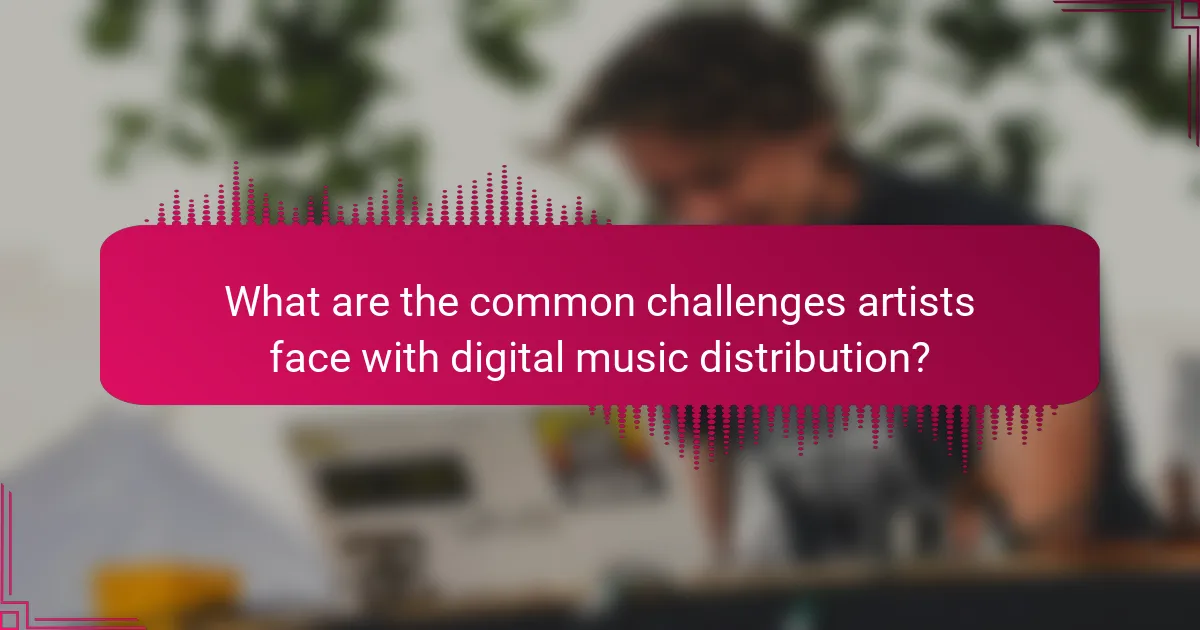
What are the common challenges artists face with digital music distribution?
Artists face several common challenges with digital music distribution, including limited revenue, complex royalty structures, and market saturation. Many artists struggle to navigate the various platforms and their differing requirements. Additionally, promotional efforts can be overwhelming, as artists must compete for attention in a crowded digital landscape. The lack of personalized support from distribution services often leaves artists feeling disconnected from their audience and unsure of how to effectively market their music.
How can artists overcome distribution-related obstacles?
Artists can overcome distribution-related obstacles by utilizing digital music distribution services. These platforms streamline the process of getting music to various streaming services and stores, thus saving time and effort.
Many distribution services offer affordable pricing models, often charging a flat fee or taking a small percentage of royalties, which can be advantageous for independent artists. For instance, services like DistroKid or TuneCore allow artists to retain full rights to their music while providing access to a wide audience.
Additionally, these services often include features such as analytics and marketing tools that help artists understand their audience and promote their music effectively. By leveraging these resources, artists can focus more on their creative work rather than the complexities of distribution.
What are the implications of copyright issues in digital distribution?
Copyright issues in digital distribution can significantly impact artists’ revenue and control over their work. Unauthorized use of music can lead to lost income and legal disputes. Proper licensing ensures artists receive fair compensation and maintain rights to their creations. Compliance with copyright laws is essential for sustainable digital distribution.
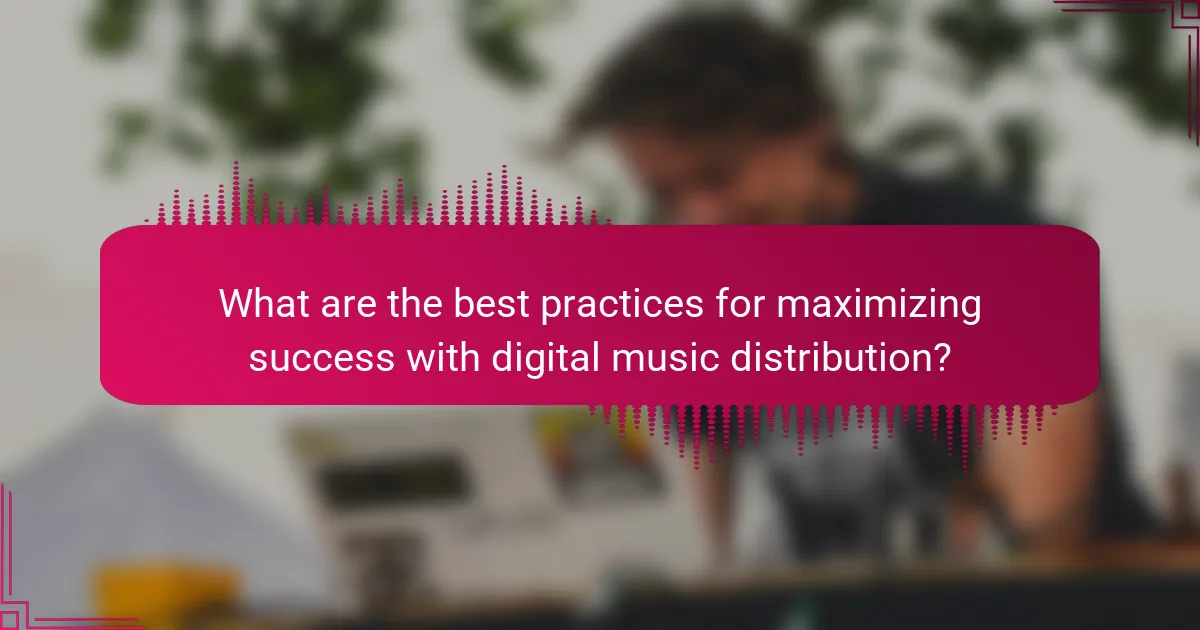
What are the best practices for maximizing success with digital music distribution?
To maximize success with digital music distribution, artists should focus on strategic planning, leveraging analytics, and selecting the right distribution partner. Understanding the platforms’ reach and audience engagement is crucial.
Artists should prioritize building a strong online presence through social media and music streaming services. Engaging with fans can enhance visibility and drive more streams.
Additionally, analyzing performance metrics helps artists refine their marketing strategies. Using data insights allows for targeted promotions and better audience connection.
Finally, selecting a distribution service that aligns with an artist’s goals and offers favorable revenue splits can significantly impact financial success.
How can artists effectively promote their music post-distribution?
Artists can effectively promote their music post-distribution by leveraging social media, engaging with fans, and utilizing digital marketing strategies. Social media platforms like Instagram and TikTok can amplify reach and foster community. Engaging with fans through live sessions and Q&As builds loyalty and increases visibility. Digital marketing strategies, such as targeted ads and email newsletters, can reach specific audiences and drive traffic to streaming platforms. Collaborating with influencers or other artists can also enhance exposure and create buzz around new releases.
What strategies should artists use to engage with their audience?
Artists should utilize digital music distribution services to effectively engage with their audience. These platforms offer broad reach, allowing artists to share their music globally. Additionally, they provide analytics, helping artists understand listener demographics and preferences. Engaging with fans through social media linked to these services enhances interaction and builds community. Regularly releasing content and utilizing promotional tools offered by these platforms can further strengthen audience connection.
What common mistakes should artists avoid in the distribution process?
Artists should avoid common mistakes such as neglecting to research distribution services, failing to understand royalty structures, and overlooking marketing strategies. These errors can hinder the potential reach and revenue of their music. Additionally, not optimizing metadata can lead to poor discoverability on streaming platforms. Understanding these pitfalls helps artists maximize their success in the digital music distribution process.


